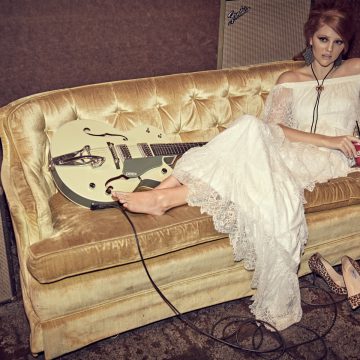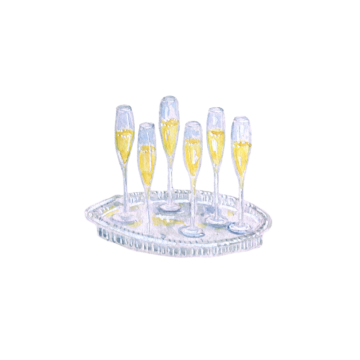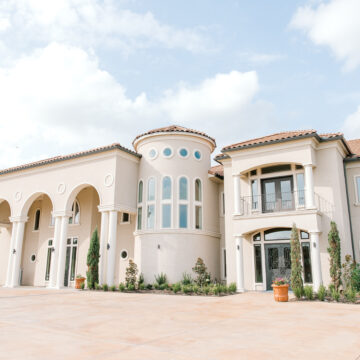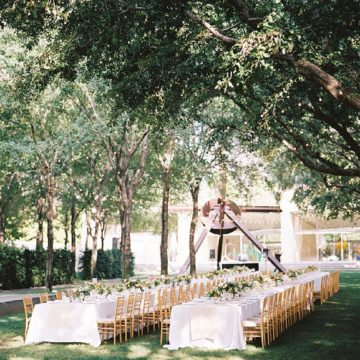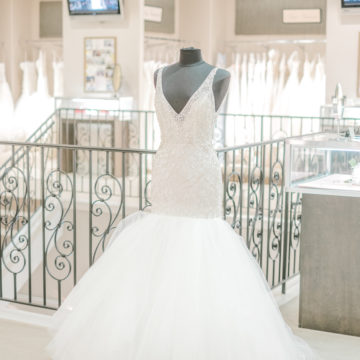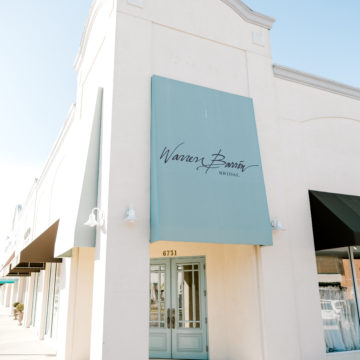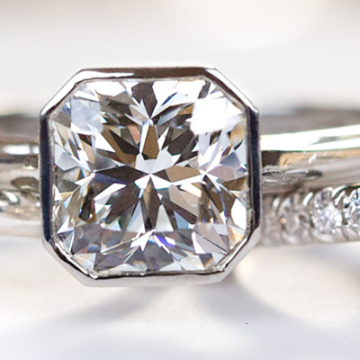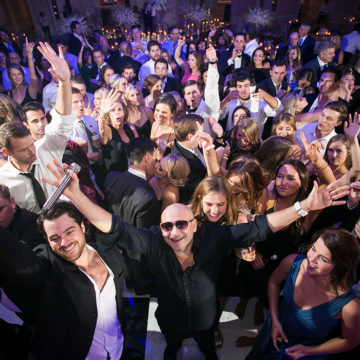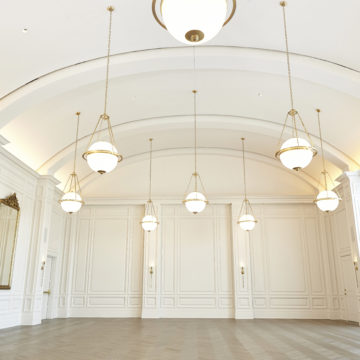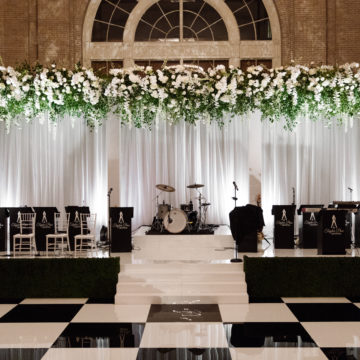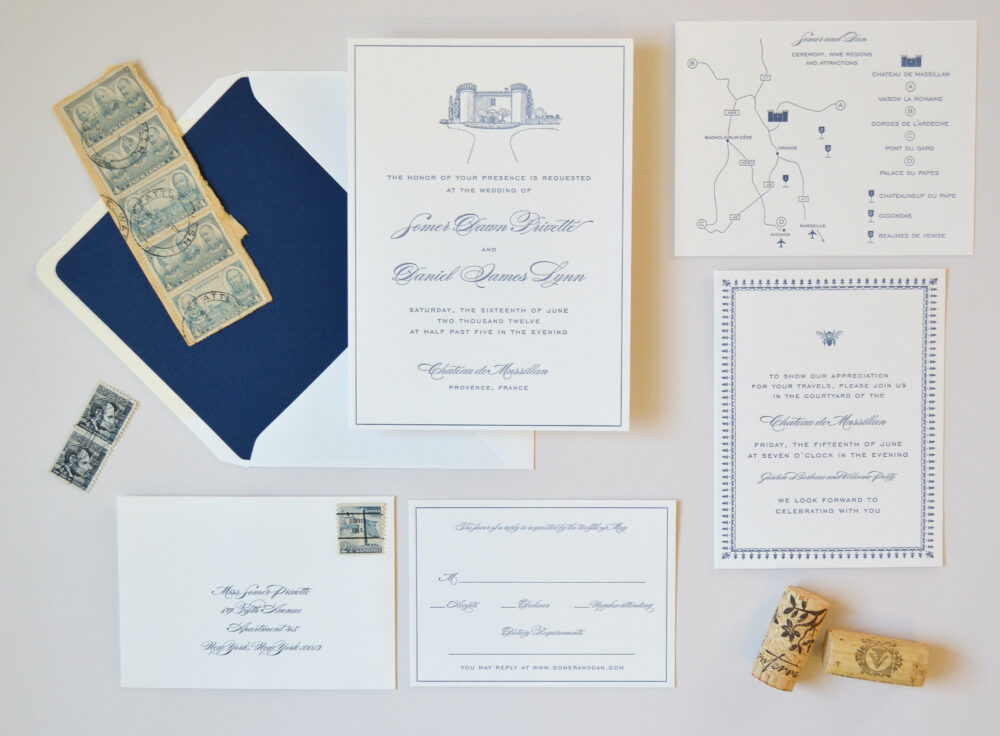
Pros, cons, and pricing of each of the most popular printing invitation options in Dallas, according to Abigail Luby of Chips & Salsa Design Studio.
Letterpress
Letterpress is currently considered the most modern and popular printing option for wedding invitations and paper goods. Its luxurious look and timeless feel can be both feminine and fun. Letterpress is a printing technique in which a raised plate bearing the invitation design or desired artwork is inked and pressed onto paper. The pressure of the transfer leaves the traditionally thick and soft stock with a deep impression of the design. Each piece of paper is fed individually through an antique printing press once for each color being printed. This is why letterpress printing is priced on a per-color basis.
Pros: Luxurious feel and look, heavily texturized and thick stock, in vogue
Cons: Not ideal for invites with more than three ink colors, longer turnaround time
Pricing: $$$
Engraving
Engraving is the most traditional (and royal!) printing method. The Duke and Duchess of Cambridge used engraved wedding invitations for their 2011 nuptials. Normally printed using gold or black ink, the invitation design is etched into a metal plate, and like letterpress, the plate is subjected to intense pressure through a printing press. Engraving differs from letterpress in that the impression is not pressed into the paper, but the process raises or embosses the artwork so one can feel the elevated text on the surface of the stock.
Pros: Timeless, traditionally simple designs
Cons: Limited color options, not ideal for invites with more than two ink colors, longer turnaround time
Pricing: $$$
Thermography
Thermography is similar to engraving as it, too, has an embossed feel. Unlike engraving, however, the artwork is first printed on paper, then a powder is dusted over the invitation and heated. The reaction of the powder and heat create a raised effect.
Pros: Raised effect for a fraction of the cost of engraving
Cons: Not ideal for invites with more than two ink colors, raised ink has rubbery feel, longer turnaround time
Pricing: $$
Flat Printing
Flat printing or digital printing takes a digitally based image and transfers it to paper, creating a smooth image with no impressions or raised text. The largest difference between flat printing and letterpress or engraving is that no special plate is needed in the process. Because of this, an unrestricted number of colors can be used without affecting the price. While flat printing can be used for wedding invitations, it’s most traditionally used for day-of paper goods like wedding programs or dinner menus.
Pros: Unrestricted number of colors, fast turnaround time
Cons: No raised or impressed texture
Pricing: $
Foil Stamping
Foil stamping is used when a metallic design or text is desired. Colored, metallic foil is sandwiched between a copper plate with raised artwork or verbiage and paper. Pressure from the printing press is then used to transfer the foiled design to stock, creating the same deep impression as letterpress. Foil colors used are traditionally silver or gold.
Pros: Luxurious feel and look, only way to effectively attain a true and opaque metallic color
Cons: Limited colors, longer turnaround time
Pricing: $$$

